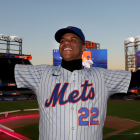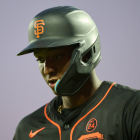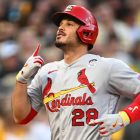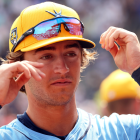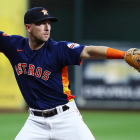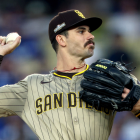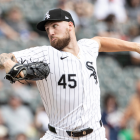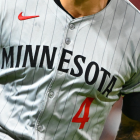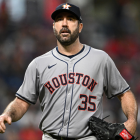For the past three seasons, following a 98-win season and loss in a sweep in the ALDS, much of the baseball media world has lamented that the Los Angeles Angels are wasting the prime of a generational talent.
Heading into Mike Trout's age-26 season, it appears maybe general manager Billy Eppler feels the same way. This offseason, the Angels have made a series of big moves in order to better position themselves to contend in the short term.
- Justin Upton, rather than opting out of his deal to become a free agent, signed a five-year, $106 million extension (there were four years and $88.5 million left on his previous deal, so it wasn't a huge extension).
- The Angels grabbed two-way Japanese star Shohei Ohtani.
- They traded for second baseman Ian Kinsler.
- They signed free-agent infielder Zack Cozart on Friday.
Last season's Angels were 80-82 with a plus-1 run differential. They only got 114 games from Trout and 27 from Upton after acquiring him from the Tigers. Only one starting pitcher made 25 or more starts, and that was Ricky Nolasco (4.92 ERA, 86 ERA+).
Before the other moves, more stable starting pitching along with full seasons from Trout and Upton should have left the Angels feeling better about contention. Now throw in Ohtani, Kinsler and Cozart, and how good can we expect the Angels to be? Let's take a look.
Offense
The lineup could look something like this:
- Ian Kinsler, 2B
- Mike Trout, CF
- Justin Upton, LF
- Albert Pujols, 1B
- Kole Calhoun, RF
- Zack Cozart, 3B
- Shohei Ohtani, DH/P
- Andrelton Simmons, SS
- Martin Maldonado, C
There's also C.J. Cron (R) and Luis Valbuena (L) who match up for a platoon in the seven-hole if Ohtani isn't in the batting order. The duo could play first base, too, with Pujols sliding to DH.
Aside from Maldonado (and we'll get to his value), everyone there has the capability to be an above-average performer with the bat.
In fact, the biggest concern might be Pujols. He's going to be 38 years old and is coming off a .241/.286/.386 (81 OPS+) season. He was comfortably above average in 2015-16, though, so there's hope for a bounce back.
Kinsler is also up there in age (36 next year) and is coming off his career-worst offensive season, but he was very good in 2016. Again, bounce-back potential.
Obviously, there are potential pitfalls, but expect the offense to be much improved. They were 11th in the AL in runs last season. I think we can expect them to move up into the top half for 2017, and that's probably being a bit conservative.
Defense
The Angels tied for fourth in defensive efficiency last season. They were second in defensive WAR, 11th in defensive runs saved and seventh in fielding percentage. They were a very good defensive ballclub.
They are going to be even better this time around, too.
Andrelton Simmons at short is arguably the best defensive player in baseball. Catcher Martin Maldonado is superb as well. New addition Kinsler is one of the best defensive second basemen in baseball, while Cozart is very good at short and third base is slightly easier to play. C.J. Cron is good at first, though it seems when Ohtani is used as a DH that Pujols will take first and he can barely move these days. Does it matter, though? The Angels have range in spades at the other three spots. Looping in catcher, they could have the best defensive infield in baseball.
The outfield won't be nearly as good, but it's fine. It won't be a detriment.
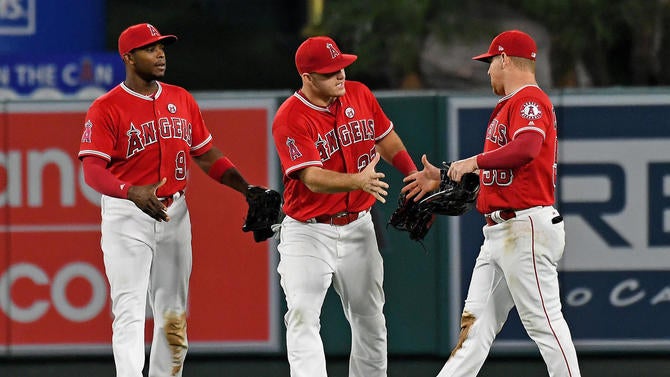
We're looking at a top-flight defensive team here.
Rotation
The Angels have a ton of starting pitching depth and a litany of question marks. This will take some time ...
Ohtani has worlds of upside, but there are also the questions surrounding how quickly and well he transitions to MLB, not to mention the UCL questions for this season.
Garrett Richards tore his UCL in 2016, but opted for a stem-cell treatment instead of Tommy John surgery. He then missed most of last season due to biceps irritation. In 70 starts since the beginning of 2014, he's 29-21 with a 3.06 ERA (123 ERA+) and was very good in five starts (2.74 ERA in 23 innings) after returning in September. He's an injury risk, but he has front-line upside.
We've seen enough at this point to say Matt Shoemaker can be a back-of-the-rotation guy and pitch around league average upon getting large volumes of work. He can get hot or be inconsistent.
J.C. Ramirez was serviceable as a starter last season but he's coming off a UCL injury himself and the start of the season is a question mark, though he was recently cleared to begin a throwing program.
Tyler Skaggs has lots of talent. He's a former 40th overall pick and top-15 prospect. He has also yet to put it all together at the big-league level. Coming off Tommy John surgery, he has made 26 starts in the past two seasons with a combined 4.41 ERA (94 ERA+). There's reason to believe he can eat innings at a league-average rate of run prevention this season.
Parker Bridwell was 10-3 with a 3.64 ERA last season, but the low strikeout rate and high home run rate mean the peripherals like him for a fall backward in 2018.
After attempting the same stem-cell treatment as Richards but then settling on Tommy John surgery, Andrew Heaney is finally ready to return. The 6-foot-2 lefty was good in 2015 (3.49 ERA in 18 starts), otherwise his résumé is injury-littered and incomplete. He's a former darling of the prospect crowd and has good stuff, so there's potential here if he avoids setbacks.
Nick Tropeano also had Tommy John surgery in 2016, so he should be ready to start the season. The righty had a 3.56 ERA in 13 starts in 2016, but his peripherals were awful (5.27 FIP, for example).
Might we see Jaime Barria this season? The 21-year-old right-hander worked his way up to Triple-A after starting in Class A Advanced last season. Across three levels (also including Double-A), Barria had a 2.80 ERA, 1.07 WHIP and 117 strikeouts in 141 2/3 innings.
There are so many names here with potential, it's reasonable to believe the Angels will have pieced together a pretty damn good five- or six-man rotation -- the latter could come in handy with all these injury risks -- by the second half. It's not difficult to squint enough to see Ohtani, Richards, Heaney and Skaggs as a quality playoff rotation, either.
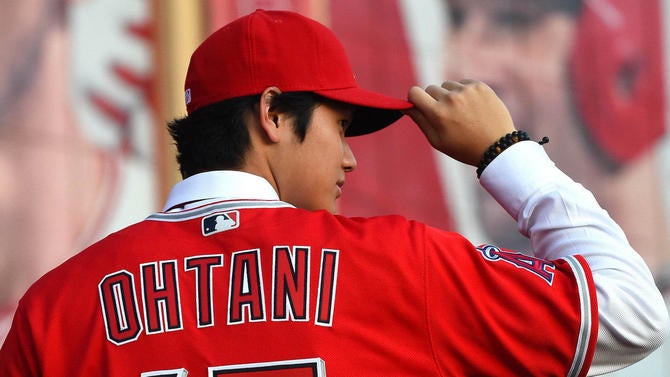
As well, lots of problems can be covered up by what we expect to be an elite defense.
Of course, it's also not a huge leap to expect this to be a total mess for a big chunk of the season. There are just so many variables. Every question won't be answered in the positive. They'll need good fortune with health in order to reach their full potential.
Bullpen
By nature, bullpens are volatile. Sure, elite-level relievers like Kenley Jansen are generally predictable, but once we get down to the middle relievers, they are incredibly unpredictable from season to season.
A good example might be last season's Angels, as a group headed up by the likes of Yusmeiro Petit, Bud Norris, Blake Parker and Keynan Middleton finished 11th in baseball in bullpen ERA.
Middleton and lefty Jose Alvarez are back after quality seasons. Parker seems set to close. He had eight saves and 15 holds against three blown saves last season while pitching to a 2.54 ERA and 0.83 WHIP. He struck out 86 in 67 1/3 innings, putting together a quietly great relief season.
Former All-Star Jim Johnson was added to the mix recently. He was terrible for the Braves last season, but he was good in 2016 and, at age 35, could have a rebound in the tank.
There are other worthwhile pieces (like Cam Bedrosian), but keep in mind also if some of the above mentioned starting pitchers aren't in the rotation, that helps with relief depth as they move to the bullpen.
Overall, this ballclub has the look of a legitimate contender. The offseason is still far from over, and many of the big names in free agency have yet to drop, of course, but it's hard to see the landscape changing to the point that the Angels aren't looking like a contender come Opening Day. I don't think they have enough at this point to take down the Astros in the AL West, but we've seen wild cards make deep postseason runs before. Just get there. Right now, the Angels look like they can. Mid-to-high 80s in victories is a reasonable expectation.










